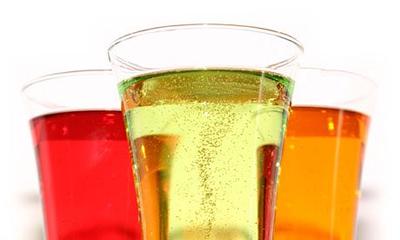Researchers show excess fructose in diet linked to severe liver disease in children

Researchers in Southampton and Rome have found excessive consumption of fructose – a sweetener found in many fizzy drinks – is strongly associated with a severe form of non-alcoholic fatty liver disease in children.
In a study involving 271 children and teenagers, those who drank more sugary drinks were more likely to have an advanced form of the liver disease, known as non-alcoholic steatohepatitis (NASH), which affects around 5% of people in the UK.
Sugar which comprises of fructose and glucose is a natural substance that occurs in many foods including fruit and, in a balanced diet, does not cause harm. However, fructose syrups or sugar containing fructose and glucose is widely added to fizzy drinks, fruit juices, jams and sweets – and excessive consumption may potentially cause health problems.
The five-year study, led by Professor Christopher Byrne, Professor of Endocrinology and Metabolism within Medicine at the University of Southampton, and colleague Dr Eleonora Scorletti at the NIHR Southampton Biomedical Research Centre, and Professor Valerio Nobili from the Bambino Gesu Hospital in Rome, found 40% of the participants had NASH – which can cause symptoms including stomach pain and extreme tiredness in children.
In adulthood it can progress to cirrhosis and liver cancer requiring liver transplantation and it has been predicted this form of liver disease will be the most frequent indication for liver transplantation in adults over the next 10 years.
Patients with high levels of fructose consumption in the study also had higher levels of uric acid, which is known to cause gout in adults.
Almost all participants in the study regularly consumed morning (95%) and afternoon (89%) snacks. In the morning these consisted largely of crackers, pizza and salty foods, while afternoon snacks included biscuits and yogurt.
Around 90% had fizzy or soft drinks at least once a week. The average daily intake of fructose among patients with NASH was 70 grams, compared to 53 grams in children and teenagers without the condition.
“Given the popularity of sugary drinks and snacks containing a lot of sugar, many children are eating too much fructose each day. Unfortunately, for every gram over the daily requirement, the risk of developing serious liver disease increases one and a half times,” said Professor Byrne, a consultant physician at University Hospital Southampton NHS Foundation Trust.
“Several studies have shown that high consumption of sugar containing fructose is associated with a number of conditions in childhood such as obesity and type 2 diabetes. However, little was known of its effect on the liver until now.”
Professor Byrne, chair of endocrinology and metabolism at the University of Southampton, added: “Our results suggest that too much fructose consumption may be harmful for the child’s liver because of the link between high fructose consumption and NASH in young children.
“This data emphasises the importance of parents ensuring that their children consume sugary drinks, snacks and sweets in moderation.”
The study was published in the Journal of Hepatology.
Press release courtesy of University Hospital Southampton NHS Foundation Trust. www.uhs.nhs.uk